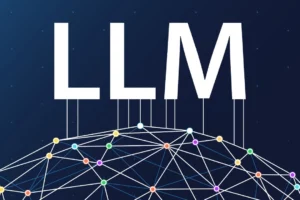From ELIZA’s humble beginnings in 1966 to the voice-activated helpers like Alexa and Siri we know today, artificial intelligence (AI) assistants have come a long way in a relatively short time. These chatbots and virtual assistants, once considered science fiction, now play integral roles in daily life for millions around the globe.
We rely on AI to help organize our calendars, provide information, entertain us, and streamline tedious tasks. As the technology continues advancing rapidly, even more responsibilities will soon fall to our virtual helpers.
To understand where we currently stand and glimpse what the future may hold, let’s explore the evolution of AI assistants over the decades.
The Early Days of Conversational AI
Humanity has long dreamed of mimicking human-level intelligence in machines. That vision took a small step towards reality in 1966 when MIT computer scientist Joseph Weizenbaum created ELIZA.

ELIZA operated on scripted responses and basic keyword pattern matching. When keywords surfaced in typed conversations, ELIZA would insert a fitting pre-coded response to keep the dialogue flowing. This approach allowed smooth back-and-forth exchanges as long as users stuck to ELIZA’s limited realm of understanding.
While primitive by today’s standards, ELIZA demonstrated technology’s potential for natural language processing (NLP) and set the foundation for future chatbots. Weizenbaum himself remained unconvinced of ELIZA’s true intelligence, calling his creation “a parody of a Rogerian psychotherapist.”
Other pioneering programs like PARRY in 1972 continued advancing conversational abilities. PARRY’s claim to fame was mimicry of a paranoid mental condition to advance psychology research. PARRY chosen this specific formulation of language and emotional expression outside the realm of logic. Despite the intentional limits, PARRY influenced research both within emerging technology and psychology fields.
Natural Language Processing Opens New Doors
As computational power increased exponentially according to Moore’s Law, so too did the sophistication of NLP. While the earliest chatbots relied completely on coded responses, NLP allowed later versions to decipher and respond to original human statements.
Rather than just matching keywords, algorithms could parse sentences, determine their meaning given context, and judge appropriate responses. Deep learning models built by consuming vast datasets helped virtual assistants better comprehend not just words themselves, but the nuances of human communication.
Microsoft took NLP applications a step further in 2006 by deploying Zo, an AI bot that could have real back-and-forth conversations instead of just responding. Zo still lacked true understanding behind those conversations, but its ability to ask follow-up questions and chain responses together felt more natural.
The Advent of Siri and Modern AI Assistants
Early chatbots set the stage, then smartphones and voice command ushered virtual assistants into the mainstream. Apple purchased a small startup called Siri in 2010, ultimately launching Siri as the world’s first widespread voice-commanded digital assistant the following year. No longer just typing words on a screen, now users could ask questions and issue commands out loud.
This shift brought virtual assistants out from behind computer screens and into billions of pockets. It also opened the floodgates for new development in the commercial space. Microsoft launched Cortana in 2015 to compete with Siri for the mobile OS domain. Amazon jumped in with Alexa in 2014, bringing AI assistance into households through devices like the Amazon Echo.
Google Now first launched in 2012 before rebranding to Google Assistant in 2016. Samsung unveiled Bixby for Galaxy smartphones in 2017. Suddenly chatbots and virtual assistants had become fixtures in day-to-day technology.
Machine Learning and The Multimodal Revolution
Underlying many modern AI advancements are machine learning and neural networks. Like NLP before it, machine learning allows assistants to expand understanding beyond coded limitations. By continually learning from real-world interactions and data, the assistants grow smarter over time.
Machine learning enables assistants to improve comprehension of user commands. It also helps them respond in more natural, human sounding voices. Chit-chat capabilities expand as small talk generates more data for niceties like humor and casual conversations.
Beyond text and voice exchange, AI assistants now interact through touchscreens and computer vision as well. This “multimodal” approach opens more diverse channels between humans and machines. Users can choose to engage their AI helpers by whichever means fits context and preference.
Everyday Tasks for Modern Virtual Assistants
From robotic sounding voices reading web search results back in the early 2000s to handling multiple responsibilities for us now, just how far have AI assistants come in practical use?
Information Retrieval
Modern AI assistants excel at locating information from both general knowledge and specific user requests. We can expect accurate, quick answers for everything from simple questions like “how far away is the moon” to personalized queries like “where is the nearest coffee shop on my commute to work.”
Assistants draw this information from knowledge graphs containing billions of connections. They determine which pieces best answer the question based on contextual understanding within the language itself. With web access expanding exponentially and knowledge graphs ever growing, the scope of this information retrieval will widen even further moving forward.
Task Automation
One major benefit AI assistants grant involves the automation of tedious tasks that otherwise require manual effort. This frees up users to focus energy on more rewarding and fulfilling duties where humans still excel best.
For personal example, utilizing an AI assistant to create calendar events, set alarms and times reminders, queue up music playlists, and send text messages alleviates dozens of small responsibilities that otherwise hamper productivity throughout each day.
Smart home devices connected through the internet of things take task automation even further. WithLink language assistants as the intermediaries, users can now handle household duties like adjusting thermostats or turning lights on and off completely hands and eyes free.
Personalized Recommendations
In addition to fielding direct queries and taking designated actions, AI assistants also draw from advanced profiling abilities to make personalized recommendations. As the assistants interact with us more over time, they gain significant insight into our individual preferences across content, products, entertainment mediums, restaurants, and various other domains.
With support for multiple individual accounts and profiles on shared devices, assistants can tune into our habits to curate suggestions tailored specifically to each user. Receiving custom restaurant options based on past ratings and article recommendations honed to align with reading history makes for an overall more enriching user experience.
Entertainment and Companionship
Even with unmatched utility expanding continually, sometimes as humans we simply wish for quick entertainment or even just simple interaction. AI assistants deliver on those fronts as well.
Playing music, podcasts, audiobooks or even generating custom raps introduces some musical joy into otherwise mundane moments. Non-stop jokes or the latest sports scores work similarly for quick laughs or staying updated on teams.
For some, even casual conversation helps provide a sense of companionship. Discussing family or home life for example allows users share thoughts that might go unsaid to even close family and friends. Small talk helps avoid isolation, making virtual connections in moments where human ones remain just out of reach.
While seemingly basic on the surface, even minor interactions like these provide delight where otherwise there may be an emotional void. The accumulate Violet effect contributes measurably to improving quality of life.
The Future of AI Assistants
If the progress AI assistants produced over recent decades teaches us anything, it’s that further exponential growth lurks just over the horizon. As computational power expands according to Moore’s Law, even more use cases will shift from fiction into reality.
Proactive Assistance
Current implementations already work wonderfully when we initiated the contact and issue direct commands. Soon though, the technology will shift to start proactively making suggestions or providing information before users ask for or even know they need it.
Just like predictive text starts suggesting full words mid-sentence as soon as a few characters type, AI assistants will get in front of our needs early by offering information or recommendations. Something as simple as a reminder of an upcoming flight once the taxi gets close to the airport. Or even automated mileage submissions once drives complete based on tracked locations.
Proactive assistance stands to remove whole layers of complexity and tasks that currently still demand manual effort. It will happen quietly, subtly, and largely without us even noticing.
Improved Emotional Intelligence
Chatbots launching simple keyword based responses lack all but the most basic language comprehension. Modern AI assistants handle nuanced linguistic Requests quite reliably. But even those remain ways from true emotional intelligence in line with human-level conversational abilities.
Over time, expect AI assistants to grow significantly in inferring emotional states based on vocal patterns and hints. From there they can tailor responses to align better given the contextual emotional understanding.
Even simple improvements like comfort when frustrated, humor when celebrations arrive unexpectedly, or reassurances during times of grief demonstrate immense value. At scale over millions of daily interactions, the net result promotes stability, relationship building, and mental health.
Seamless Multilingual Engagement
Just as AI promises to bridge physical distance gaps, so too can assistants dissolve language barriers that frustrate international communication. Using quickly improving real-time vocal translation, users worldwide can soon interact freely, asking questions and sharing ideas even without any languages in common.
Text-based translation brought huge progress already. Adding reliable voice services enhanced by AI learning models will multiply that impact significantly. Such advances hold particular promise for business interactions and medical care across borders where nuance matters greatly.
A future where language no longer impedes the spread of ideas across cultures points towards great possibility in terms of technological as well societal advancements.
Integrating Assistants into The Physical World
So far AI assistants operate predominantly in software realms like smartphones apps and smart speakers. The coming years will see them permeate more physical devices through smart IoT integrations.
Combining internet connected appliances and environmental sensors with AI assistants grants abilities like adjusting lights, thermostats, and other electronics verbally without physically interacting with each device directly.
As autonomous vehicles quick go mainstream later this decade, conversational interfaces will help navigate passengers to destinations while allowing them to accomplish other tasks hands-free throughout the ride.
The ultimate end goal makes acting environmentally almost as easy as imagining change then voicing the thought to manifest it into reality. Eliminating physical effort opens up convenience previously unfathomable.
Privacy, Security, and Ethical Considerations
While promising incredible potential to improve life, AI also raises reasonable concerns regarding privacy, security, bias, accountability, and human-AI collaboration.
User privacy and overall security represent immediate considerations as assistants gain insights into daily routines, habits, contacts, and personal data points. Ethical data collection policies matched by robust cyber protections provide a starting point. Still, skepticism seems warranted as to how third parties might exploit these extensive user profiles and access down the road.
In addition to personal user data vulnerability, biased and unfair algorithmic decision making presents another threat requiring vigilance. Left unchecked, AI systems can further marginalize disadvantaged groups. Moral obligations around research and development demand architects address dangerous biases before real-world integrations.
Looking longer term, balancing AI’s incredible promise for good against risks like artificially intelligent systems advancing beyonds human control is no easy challenge. Researchers across technology, policy, ethics, and futurist circles must work collectively to ensure coming innovations uplift society responsibly.
The Road Ahead
From humble beginnings in the earliest chatbots to commonplace voice assistants now and even bigger capabilities fast emerging, artificial intelligence promises tremendous potential to transform life as we know it.
Real risks give pause and raise alarm bells in some corners. But by focusing ethics, security, and wise judgement while unleashing creativity, computational power, and plummeting data storage costs, we may just build a future our grandchildren scarcely dreamed possible.
















Add Comment